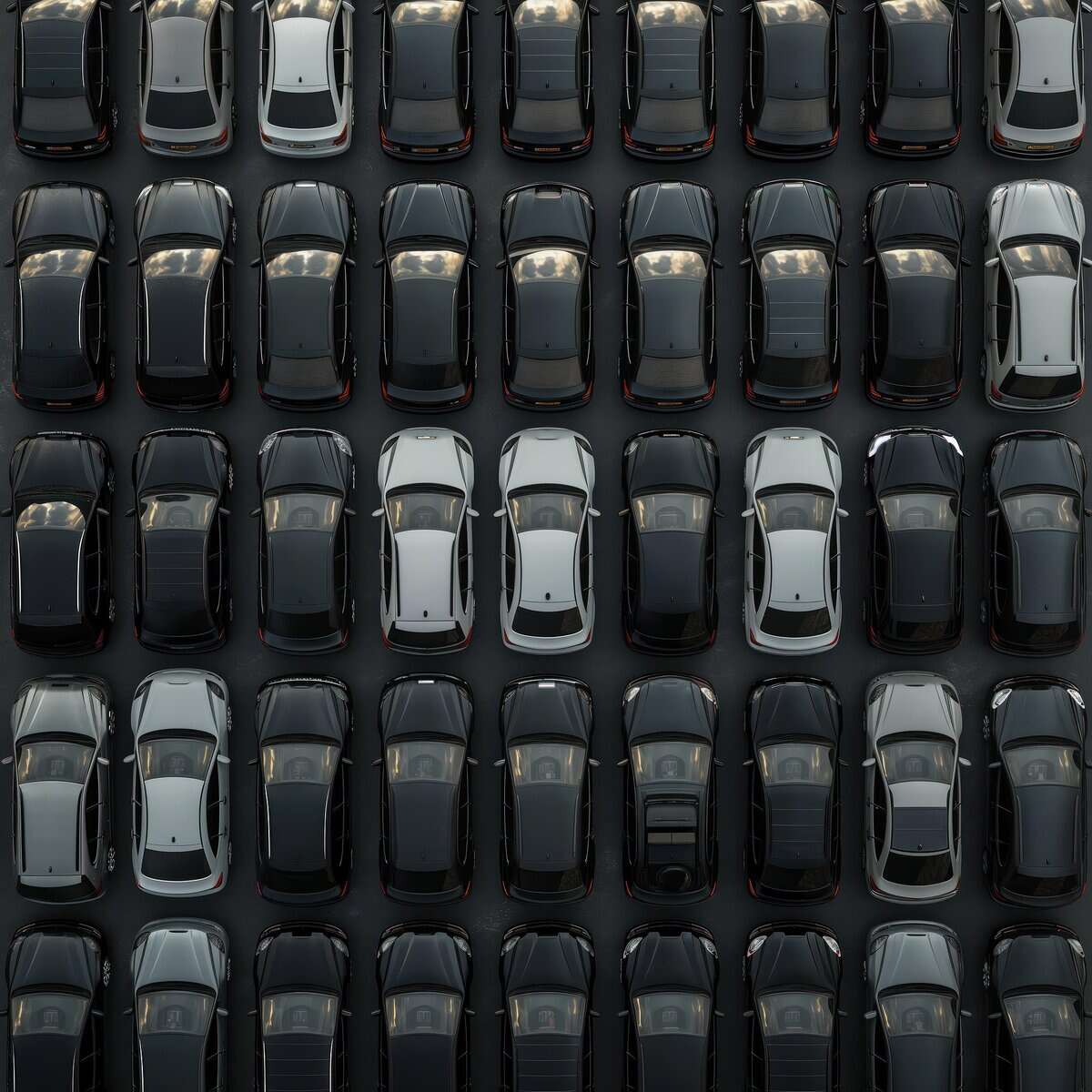Beyond the BEV Monoculture: Why Europe’s Auto Industry Is Rediscovering Hybrids

picture: Pixabay
Europe’s carmakers and policymakers are quietly — but decisively — shifting from a “pure EV or bust” mindset to a multi-powertrain path that includes hybrids. Slower-than-expected BEV uptake, capacity and cost pressures, regulatory uncertainty, and a growing focus on industrial competitiveness are all pushing the sector toward balanced electrification. Real-world evidence suggests hybrids deliver large, near-term CO₂ cuts while using scarce battery capacity far more efficiently than BEVs.
The reality check: EV momentum has cooled
Across Europe, EV momentum is no longer matching the most optimistic forecasts. Multiple manufacturers have delayed all-electric launches, extended the life of ICE and hybrid lines, and reworked model plans. Several well-publicized “all-EV by 2030/2035” declarations have been revised or softened as companies confront under-utilised plants, slower demand growth, and a tougher macro environment.
Notably:
- OEMs recalibrate: Stellantis, Ford, Porsche, Bentley, and Volvo have all tempered full-EV timelines. Ford is developing a multi-energy platform in Spain by 2027 to support ICE, hybrid, and BEV variants for global markets. At the premium end, Porsche plans ICE and hybrid options on top models and a hybrid Macanalongside its electric sibling.
- Program extensions & delays: Nissan and JLR are extending current ICE/hybrid lifecycles (e.g., Juke, Range Rover Evoque PHEV) by 12–24 months, while some new BEVs face 6–18-month delays.
- China hedges, too: Even aggressively EV-oriented players are cautious in Europe. BYD plans hybrids in its new Hungary and Turkey plants; Chery is starting with ICE/hybrid in Spain rather than full BEV.
- Cost of course-corrections: Strategic pivots aren’t free. At one major group, changes in product plans and timings are set to hit earnings by billions of euros this year, underscoring the financial weight of re-sequencing the EV transition.
This operational picture is mirrored in the policy arena. Registration data show BEV market share slippage in the EU, triggering concern about 2025 CO₂ step-ups. Europe’s automakers (ACEA) have urged accelerated regulatory reviewsand short-term relief to avoid fines that would otherwise fund the transition. Suppliers (CLEPA) likewise call for a pragmatic reset that protects Europe’s industrial base.
Competitiveness matters — and so does consumer reality
Europe’s challenge is not intent but execution at scale. Charging build-out remains uneven; electricity prices and production costs are high; supply chains for batteries and critical materials are tight; and policy shifts (like sudden subsidy changes) have rattled demand. Meanwhile, U.S. tariffs, Chinese competition, and structural overcapacity in parts of Europe complicate investment math.
Within this context, a single-technology mandate risks misallocating capital and eroding competitiveness. A portfolio strategy — prioritising the right technology for the right use case and time horizon—keeps Europe in the game while emissions keep falling.
The battery is the bottleneck: use it where it cuts the most CO₂ now
One crucial—and often overlooked — constraint is battery production capacity. When batteries are scarce and expensive, deploying them where they cut the most CO₂ per kWh of battery becomes the logical, climate-first move.
That is where hybrids shine:
- Real-world hybrid gains: Across nearly 100 non-plug-in hybrids tested on-road, tailpipe CO₂ fell ~30% on average versus equivalent ICE models — already covering >75% of the EU’s post-2021 2030 target (-37.5%) with technology on sale today. With new hybrid generations, this margin improves further.
- Battery efficiency of CO₂ reduction: When CO₂ reduction is normalized by battery size, mild and full hybridsdeliver the highest CO₂ cut per unit of battery. Plug-in hybrids can perform well if driven predominantly on electricity, but that’s variable in practice. BEVs, while zero-tailpipe, are the least efficient users of scarce batteries today because they require large packs sized for rare long-range use cases.
Put simply: if the goal is maximising CO₂ reduction this decade, spreading limited battery capacity across millions of hybrids beats concentrating it in fewer BEVs. This strategy also works with the slow turnover of Europe’s fleet (average vehicle age >12 years) by upgrading more vehicles sooner.
A practical transition ladder — starting now
A workable pathway emerges from the data:
- Short-term: Move from gasoline ICE to mild hybrid (≈-11% CO₂), or diesel to diesel mild hybrid where appropriate (further ≈-6%).
- Medium-term: Step into full hybrids for another ≈-16–23% reduction, reaching ≈-30–34% versus baseline with widely deployable tech.
- Targeted PHEVs: Use plug-ins where duty cycles enable high electric utilisation (company fleets with charging policies, urban delivery, etc.).
- Scale BEVs where conditions fit: As grids decarbonise, charging densifies, and battery supply expands, BEVs scale in segments and regions where the total system supports them.
This ladder cuts real-world CO₂ now, protects industrial capacity, and keeps options open for later-decade technologies (next-gen batteries, e-fuels in niches, or hydrogen where it makes sense). It also reduces the risk of stranded assets and abrupt policy reversals.
Policy implications: technology openness with hard climate outcomes
Europe can still hit its climate goals—and defend its industrial base—by shifting from technology mandates to outcome-based rules that reward verified, real-world CO₂ cuts. That means:
- Keep the 2050 destination, diversify the 2030s route. Set tough, technology-neutral performance standards; let OEMs choose the least-cost carbon path.
- Align incentives with battery efficiency. Prioritise vehicles that deliver the largest CO₂ drop per kWh of battery until supply constraints ease.
- Stabilise demand conditions. Provide predictable, multi-year frameworks for incentives, TCO parity, and charging build-out—avoiding on-off subsidy shocks.
- Back European content and capability. Encourage local value chains (cells, cathodes, power electronics) without locking policy to one drivetrain.
- Measure what matters. Use on-road metrics and lifecycle transparency to capture true climate performance and keep consumer trust.
What this means for the Hybrid Alliance
The evidence is converging: hybrids are no longer a detour; they are the fast lane to meaningful CO₂ cuts during a decade defined by constraints. Carmakers are already acting—re-sequencing product plans, launching multi-energy platforms, and anchoring European plants with hybrid capacity. Policymakers are revisiting timelines and toolkits. Suppliers are urging pragmatic revisions to keep Europe competitive.
The Hybrid Alliance should champion a balanced electrification narrative:
- Hybrids accelerate near-term decarbonisation and amplify the impact of scarce batteries.
- They buy time for grids, infrastructure, and supply chains to scale sustainably.
- They preserve industrial strength by leveraging Europe’s engineering depth across multiple powertrains.
- They keep consumers onboard with attainable prices and familiar use patterns — critical for mass adoption.
Bottom line: A resilient, climate-credible transition will be multi-technology. Europe should embrace hybrids as a central pillar — not a compromise — on the road to zero. If we optimise for CO₂ per battery kWh today, we can cut more emissions, faster, while preparing the ground for tomorrow’s all-electric future.
Read more: English News, ACEA, Automotive Manufacturing, Emission Analytics


